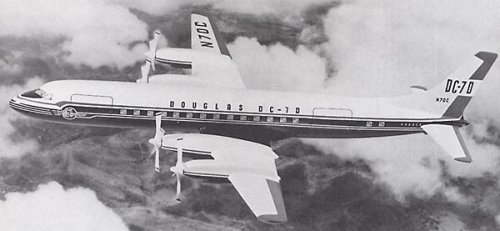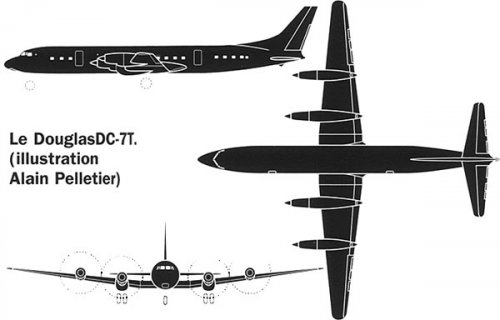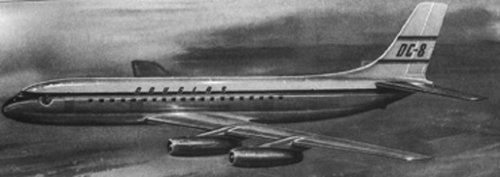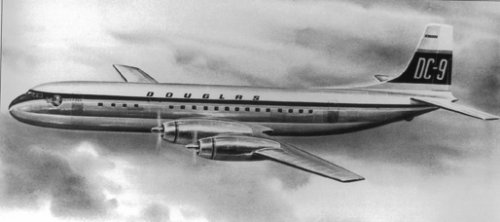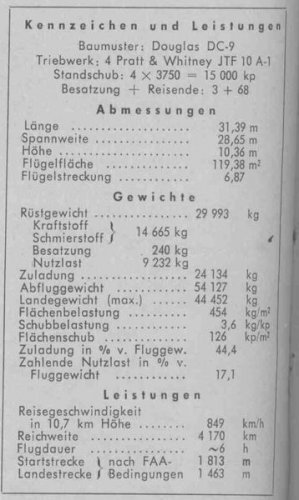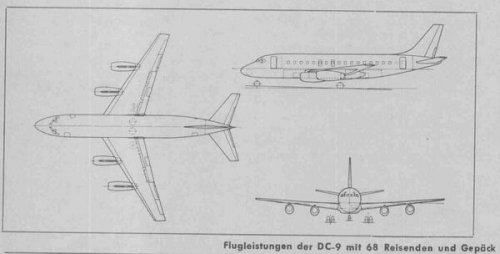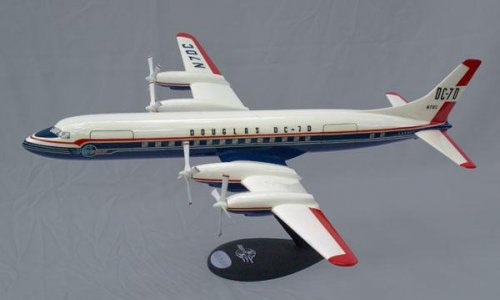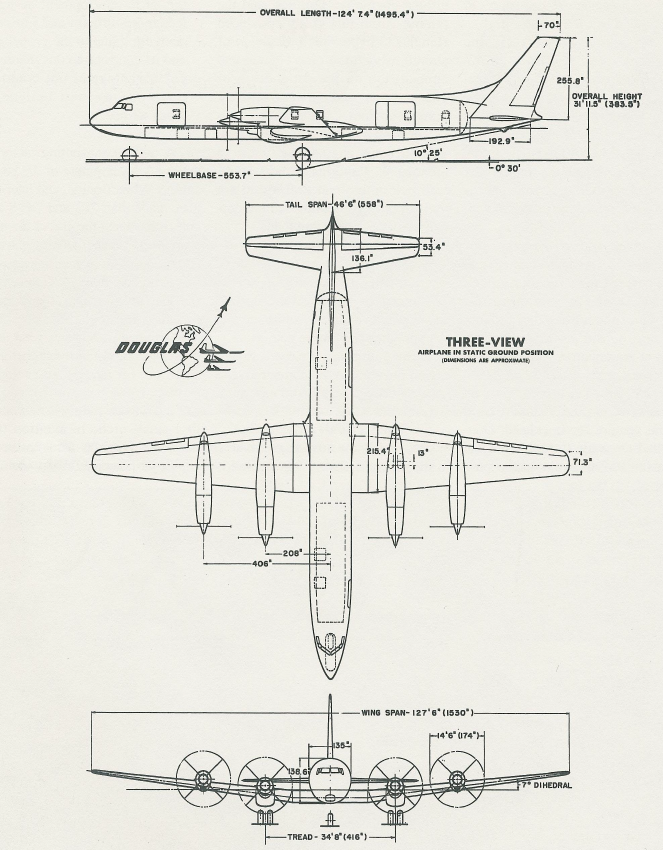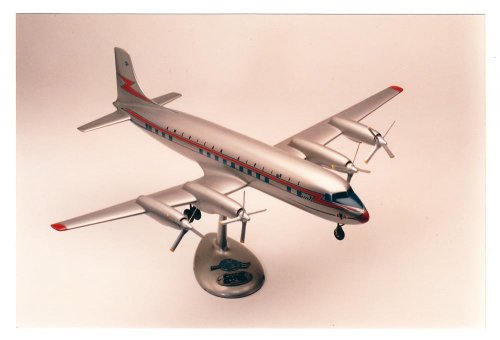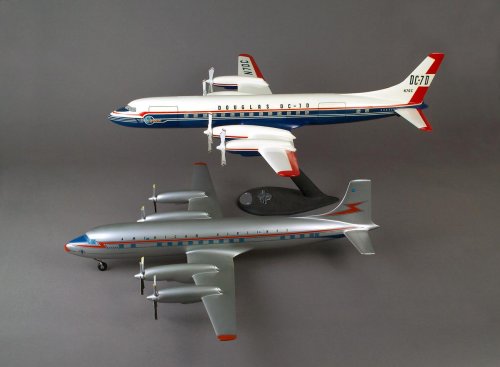- Joined
- 25 July 2007
- Messages
- 3,864
- Reaction score
- 3,147
Greetings Folks,
I'm looking for help filling in some blanks in our Piston-to-Turboprop conversion listings.
http://www.secretprojects.co.uk/forum/index.php?PHPSESSID=efe32cb58dc9597863d9da99081ce204&topic=1070.90
The aircraft in question is an unbuilt turboprop evolution of the Douglas DC-7. I came across the an image (attached) of the DC-7D with R-R Tynes or Allison turboprops.
Boxkite was good enough to send me details of the DC-7T also with Tynes (3-view attached and details below). Obviously, the DC-7T and DC-7D are closely-related aircraft.
Can anyone shed any light on turboprop DC-7 developments and their designations?
Any idea on the Allison engine proposed for the DC-7D? The timing is right for the 501-D13A but it is a lot less powerful than a Tyne. Timing is right for the T40 too but that seems an improbably-complex engine for an airliner.
Thanks in advance.
---------------------------
Info from: Les avions de ligne américains, 1913-2008, Alain Pelletier, Larivière (éditions).
http://www.secretprojects.co.uk/forum/index.php?topic=4619.msg38301
To meet the needs of United Airlines, Douglas studied a turboprop version of its DC-7. The turbine engines envisaged were the Rolls-Royce Tyne Mk. I or Mk. II. Depending upon configuration, the DC-7T would have been able to transport from 82 to 135 passengers from Los Angeles to Honolulu.
Span: 38.86m, Length: 37.98m, Height: 9.74m, Max Weight: 64,865 kg, Max Speed: 708 km/h, Ceiling: 7620m.
I'm looking for help filling in some blanks in our Piston-to-Turboprop conversion listings.
http://www.secretprojects.co.uk/forum/index.php?PHPSESSID=efe32cb58dc9597863d9da99081ce204&topic=1070.90
The aircraft in question is an unbuilt turboprop evolution of the Douglas DC-7. I came across the an image (attached) of the DC-7D with R-R Tynes or Allison turboprops.
Boxkite was good enough to send me details of the DC-7T also with Tynes (3-view attached and details below). Obviously, the DC-7T and DC-7D are closely-related aircraft.
Can anyone shed any light on turboprop DC-7 developments and their designations?
Any idea on the Allison engine proposed for the DC-7D? The timing is right for the 501-D13A but it is a lot less powerful than a Tyne. Timing is right for the T40 too but that seems an improbably-complex engine for an airliner.
Thanks in advance.
---------------------------
Info from: Les avions de ligne américains, 1913-2008, Alain Pelletier, Larivière (éditions).
http://www.secretprojects.co.uk/forum/index.php?topic=4619.msg38301
To meet the needs of United Airlines, Douglas studied a turboprop version of its DC-7. The turbine engines envisaged were the Rolls-Royce Tyne Mk. I or Mk. II. Depending upon configuration, the DC-7T would have been able to transport from 82 to 135 passengers from Los Angeles to Honolulu.
Span: 38.86m, Length: 37.98m, Height: 9.74m, Max Weight: 64,865 kg, Max Speed: 708 km/h, Ceiling: 7620m.

